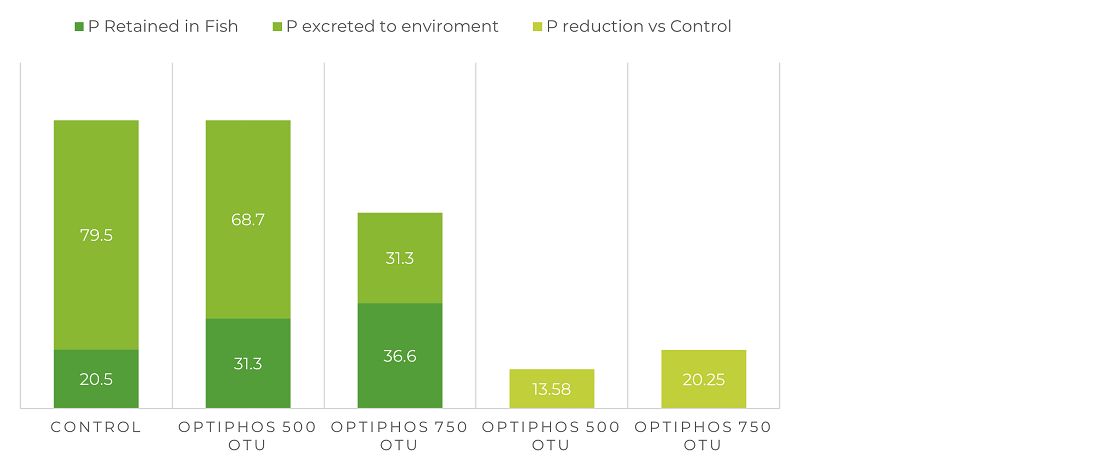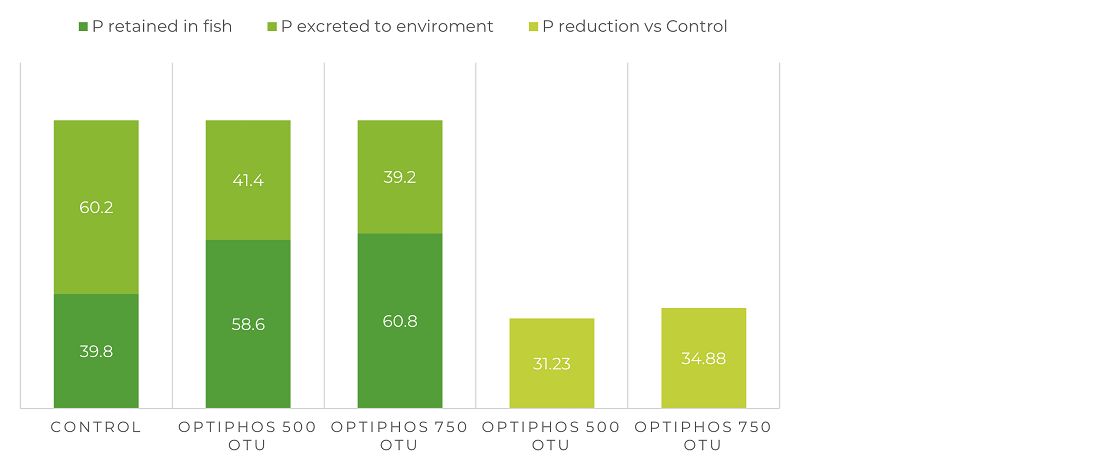Fish meal is recognised as a source of high-quality protein in aquaculture. However, there are some challenges with its utilisation due to price and availability. To reduce the costs of aquatic animal feed, fish meal is increasingly being replaced by plant protein raw materials which are inexpensive and widely available.
Large amounts of organic phosphorus (P) bound in phytic acid is present in modern day salmon and trout diets, but this is poorly utilised. This represents an opportunity to use the phytase enzyme OptiPhos to help reduce the environmental impact of the salmonid industry.
Fish feed diets today contain high levels of vegetable protein sources (as a replacement for more expensive fish meal) resulting in high levels of phytate in the feed. Phytase hydrolyses the phytate (phytic acid) and releases bound P, allowing significant financial savings by reducing the amount of inorganic P used. Additionally, the excretion of P into the environment is also significantly reduced.
Trials conducted in rainbow trout (Onchorhynchus mykiss) and Atlantic salmon (Salmo salar) demonstrate that P levels in feed can be reduced significantly (range 2.5 - 3.5 g/kg) and that in some cases, added inorganic P sources could be eliminated completely.
There are also financial benefits in implementing an OptiPhos strategy. Increasing digestible energy (DE) levels in salmonid feeds has a significant impact on space in formulations. Competition for space can add significantly to formulation costs so any opportunity to optimise space can provide a cost benefit.
OptiPhos, by reducing the need for P supplementation, can offer formulation cost savings of up to €15/metric tonne, a win economically and for environmental sustainability. This excludes any opportunity the farmer may have to increase production volumes and make better use of production biomass consents which could be significant.
Figures 1 and 2 show the positive impact of OptiPhos on P retention and excretion in different trials with Atlantic salmon and rainbow trout.


Conclusions
Results presented in these studies clearly show:
- OptiPhos at 500-750 OTU/kg feed significantly reduces P discharge to the environment in trout and salmon production systems
- OptiPhos can significantly reduce the use of inorganic P in salmonid feeds
- OptiPhos helps to minimise the environmental impact of salmonid aquaculture



